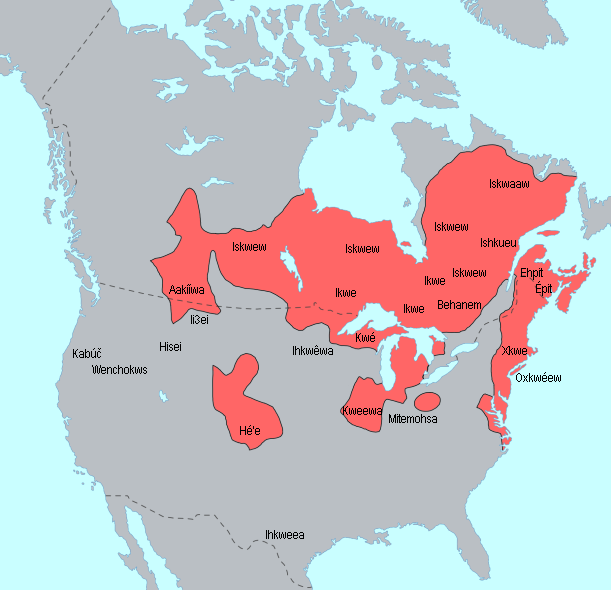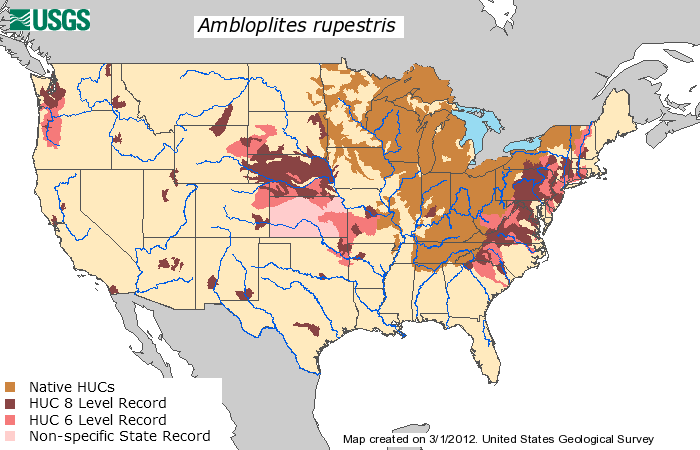|
Maskinongé River
The Maskinongé River is located north of the administrative region of Lanaudière and west of the administrative region of Mauricie, in Quebec, in Canada. The river has a total length of 40 km. It takes its source in Maskinongé Lake, located in Saint-Gabriel-de-Brandon, Quebec, Saint-Gabriel-de-Brandon. It crosses the municipalities of Saint-Gabriel-de-Brandon, Saint-Gabriel, and Saint-Didace in the region of Lanaudière; then Saint-Justin, Quebec, Saint-Justin, Louiseville, and Maskinongé, Quebec, Maskinongé before pour into the north shore of Lake Saint-Pierre at the height of this municipality. Toponymy The name of the river comes from the muskellunge ("Esox masquinongy"), a species of Esox, pike from North America. Its name comes from the Algonquian languages, Algonquin and means "deformed pike". Geography Course The Maskinongé River begins its course at an altitude of 142 m in Lake Maskinongé, lake of the same name. It then flows south-east for a distance ... [...More Info...] [...Related Items...] OR: [Wikipedia] [Google] [Baidu] |
Maskinongé, Quebec
Maskinongé () is a municipality in the Mauricie region of the province of Quebec in Canada Canada is a country in North America. Its Provinces and territories of Canada, ten provinces and three territories extend from the Atlantic Ocean to the Pacific Ocean and northward into the Arctic Ocean, making it the world's List of coun .... References External links * Incorporated places in Mauricie Municipalities in Quebec Canada geography articles needing translation from French Wikipedia {{Quebec-geo-stub ... [...More Info...] [...Related Items...] OR: [Wikipedia] [Google] [Baidu] |
Algonquian Languages
The Algonquian languages ( ; also Algonkian) are a family of Indigenous languages of the Americas and most of the languages in the Algic language family are included in the group. The name of the Algonquian language family is distinguished from the orthographically similar Algonquin dialect of the Indigenous Ojibwe language (Chippewa), which is a senior member of the Algonquian language family. The term ''Algonquin'' has been suggested to derive from the Maliseet word (), meaning 'they are our relatives/allies'. Speakers of Algonquian languages stretch from the east coast of North America to the Rocky Mountains. The proto-language from which all of the languages of the family descend, Proto-Algonquian, was spoken around 2,500 to 3,000 years ago. There is no scholarly consensus about where this language was spoken. Family division This subfamily of around 30 languages is divided into three groups according to geography: Plains, Central, and Eastern Algonquian. Of t ... [...More Info...] [...Related Items...] OR: [Wikipedia] [Google] [Baidu] |
Mandeville, Quebec
Mandeville () is a municipality in the D'Autray Regional County Municipality in the Lanaudière region of Quebec, Canada. History In the early 19th century, the territory was part of the Hope Fief. This fief, with an area of 20,000 arpents (68.4 km2) was granted to Angélique Blondeau by Seignoral Lord Charles-Louis Tarieu de Lanaudière, but was mostly neglected by the seignoral lords. In 1824, one of the first settlers, Maximillien or Maxime Mandeville, arrived at the shores of the lake that today bears his name. And in 1837, further colonization occurred when a large group of settlers came from Maskinongé, Berthierville, and Sorel. In 1894, the Mission of Saint-Charles-de-Mandeville was formed and became a parish in 1903. The name is most likely a reference to Charles Turgeon, pastor of the nearby parish of Saint-Didace, who worked extensively in Mandeville. In 1904, the Municipality of Saint-Charles-de-Mandeville was established and in 1905, its post office opened. Si ... [...More Info...] [...Related Items...] OR: [Wikipedia] [Google] [Baidu] |
Trois-Rivières
Trois-Rivières (, ; ) is a city in the Mauricie administrative region of Quebec, Canada. It is located at the confluence of the Saint-Maurice River, Saint-Maurice and Saint Lawrence River, Saint Lawrence rivers, on the north shore of the Saint Lawrence River across from the city of Bécancour, Quebec, Bécancour. It is part of the densely populated Quebec City–Windsor Corridor and is approximately halfway between Montreal and Quebec City. Trois-Rivières is the economic and cultural hub of the Mauricie region. The settlement was founded by French colonists on July 4, 1634, as the second permanent settlement in New France, after Quebec City in 1608. The name of Trois-Rivières, which dates from the end of the 16th century, was used by French explorers in reference to the three channels in the Saint-Maurice River formed at its mouth with the Saint Lawrence, as it is divided by two islands, Potherie (Île Caron) and Saint-Quentin Island, Île Saint-Quentin. The city occupies a ... [...More Info...] [...Related Items...] OR: [Wikipedia] [Google] [Baidu] |
Matawinie
Matawinie () is a regional county municipality in the region of Lanaudière in southwestern Quebec, Canada. Its seat is Rawdon. The population according to the 2021 Canadian Census was 55,500. Subdivisions There are 27 subdivisions within the RCM: ;Municipalities (14) * Chertsey * Entrelacs * Notre-Dame-de-la-Merci * Rawdon * Saint-Alphonse-Rodriguez * Sainte-Béatrix * Saint-Côme * Saint-Donat * Sainte-Émélie-de-l'Énergie * Saint-Félix-de-Valois * Saint-Jean-de-Matha * Sainte-Marcelline-de-Kildare * Saint-Michel-des-Saints * Saint-Zénon ;Parishes (1) * Saint-Damien ;Unorganized Territory (12) * Baie-Atibenne * Baie-de-la-Bouteille * Baie-Obaoca * Lac-Cabasta * Lac-des-Dix-Milles * Lac-Devenyns * Lac-du-Taureau * Lac-Legendre * Lac-Matawin * Lac-Minaki * Lac-Santé * Saint-Guillaume-Nord ;First Nations reserve (1) * Manawan Demographics Population Language French and Atikamekw are the main languages. Transportation Access Routes Highwa ... [...More Info...] [...Related Items...] OR: [Wikipedia] [Google] [Baidu] |
Ambloplites Rupestris
The rock bass (''Ambloplites rupestris''), also known as the rock perch, goggle-eye, red eye, and black perch, is a freshwater fish native to east-central North America. This red-eyed fish is a species of freshwater fish in the sunfish family (Centrarchidae) of order Centrarchiformes and can be distinguished from other similar species by the six spines in the anal fin (other sunfish have only three anal fin spines). Distribution Rock bass are native to the St Lawrence River and Great Lakes system, the upper and middle Mississippi River basin in North America from Québec to Saskatchewan in the north down to Missouri and Arkansas, south to the Savannah River, and throughout the eastern U.S. from New York through Kentucky and Tennessee to the northern portions of Alabama and Georgia and Florida in the south. The rock bass has also been found in the Nueces River system in Texas. A population introduced to the Loire River in France between 1904 and 1910 is successfully self-sustaini ... [...More Info...] [...Related Items...] OR: [Wikipedia] [Google] [Baidu] |
Red Knight
Red Knight (, , ) is a title borne by several characters in the Arthurian legend. Legend Tales of Perceval The Red Knight prominently appears in the tales of the hero Perceval as his early enemy. * In Chrétien de Troyes' ''Perceval, the Story of the Grail'', the Red Knight of the Forest of Quinqeroi steals a cup from King Arthur. He is killed by Perceval, who wears his armour and comes to be known as the Red Knight himself. In the Third (Manessier's) Continuation, Perceval also kills the Lord of the Red Tower. * In Wolfram von Eschenbach's ''Parzival'', a retelling of Chrétien's story, the Red Knight is identified as Sir Ither, the Red Knight of Kukumerlant, a cousin to both Arthur and Perceval. He too is killed by Perceval, who then puts on his armour. * In ''Perlesvaus'', Gawain defeats Cahot the Red (''Cahot li Roux''), a brother of the Knight of the Red Shield killed by him years earlier, retaking his mother's stolen castle. * In '' Sir Perceval of Galles'', Perceval kill ... [...More Info...] [...Related Items...] OR: [Wikipedia] [Google] [Baidu] |
Fish
A fish (: fish or fishes) is an aquatic animal, aquatic, Anamniotes, anamniotic, gill-bearing vertebrate animal with swimming fish fin, fins and craniate, a hard skull, but lacking limb (anatomy), limbs with digit (anatomy), digits. Fish can be grouped into the more basal (phylogenetics), basal jawless fish and the more common jawed fish, the latter including all extant taxon, living cartilaginous fish, cartilaginous and bony fish, as well as the extinct placoderms and acanthodians. In a break to the long tradition of grouping all fish into a single Class (biology), class (Pisces), modern phylogenetics views fish as a paraphyletic group. Most fish are ectotherm, cold-blooded, their body temperature varying with the surrounding water, though some large nekton, active swimmers like white shark and tuna can hold a higher core temperature. Many fish can communication in aquatic animals#Acoustic, communicate acoustically with each other, such as during courtship displays. The stud ... [...More Info...] [...Related Items...] OR: [Wikipedia] [Google] [Baidu] |
Saint-Gabriel, Quebec
Saint-Gabriel () is a town in the Lanaudière region of Quebec, Canada, part of the D'Autray Regional County Municipality. It is located on the shores of Lake Maskinongé, in the shadows of the Laurentian Mountains. History The first settlers were Loyalists, Irish, and Scottish, arriving around 1825 to the shores of Lake Maskinongé, where they formed a community that was known as Lake Maskinongé Settlement by 1827, and later as the Mission of Lac-Maskinongé. In 1837, the name Saint-Gabriel-du-Lac-Maskinongé came in use but was changed to Saint-Gabriel-de-Brandon in 1840. This name refers to the angel Gabriel and the geographic township of Brandon that was proclaimed in 1827 and in which it is located. In 1851, the Parish of Saint-Gabriel-de-Brandon was founded and the post office opened that same year. In 1855, the Saint-Gabriel-de-Brandon Parish Municipality was established and the town of Saint-Gabriel remained part of this parish municipality until 1892, when it separat ... [...More Info...] [...Related Items...] OR: [Wikipedia] [Google] [Baidu] |
Canadian Shield
The Canadian Shield ( ), also called the Laurentian Shield or the Laurentian Plateau, is a geologic shield, a large area of exposed Precambrian igneous and high-grade metamorphic rocks. It forms the North American Craton (or Laurentia), the ancient geologic core of the North American continent. Glaciation has left the area with only a thin layer of soil, through which exposures of igneous bedrock resulting from its long volcanic history are frequently visible. As a deep, common, joined bedrock region in eastern and central Canada, the shield stretches north from the Great Lakes to the Arctic Ocean, covering over half of Canada and most of Greenland; it also extends south into the northern reaches of the continental United States. Geographical extent The Canadian Shield is a physiographic division comprising four smaller physiographic provinces: the Laurentian Upland, Kazan Region, Davis and James. The shield extends into the United States as the Adirondack Mountains ( ... [...More Info...] [...Related Items...] OR: [Wikipedia] [Google] [Baidu] |
Laurentides
The Laurentides (, ) is a region of Quebec. While it is often called the Laurentians in English, the region includes only part of the Laurentian Mountains. It has a total land area of and its population was 589,400 inhabitants as of the 2016 Census. The area was historically occupied by the Weskarini Algonquin First Nation.https://morinheightshistory.org/the-indigenous-people-of-the-laurentians/ English Canadians began settling in the 1700s in towns like Arundel and Harrington and St. Columban and Clyde, today's La Conception. French Canadians began settlement in the first half of the 19th century, establishing an agricultural presence throughout the valleys. During the 20th century, the area also became a popular tourist destination, based on a cottage and lake culture in the summer, and a downhill and cross-country ski culture in the winter. Ski resorts include Saint-Sauveur and Mont Tremblant. The Laurentides offer a weekend escape for Montreal Montreal is the Li ... [...More Info...] [...Related Items...] OR: [Wikipedia] [Google] [Baidu] |




